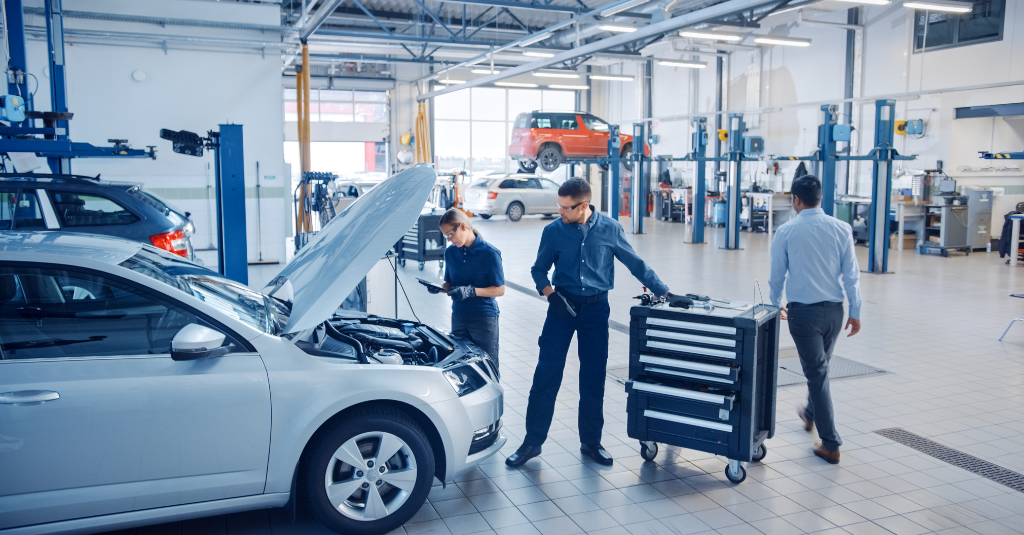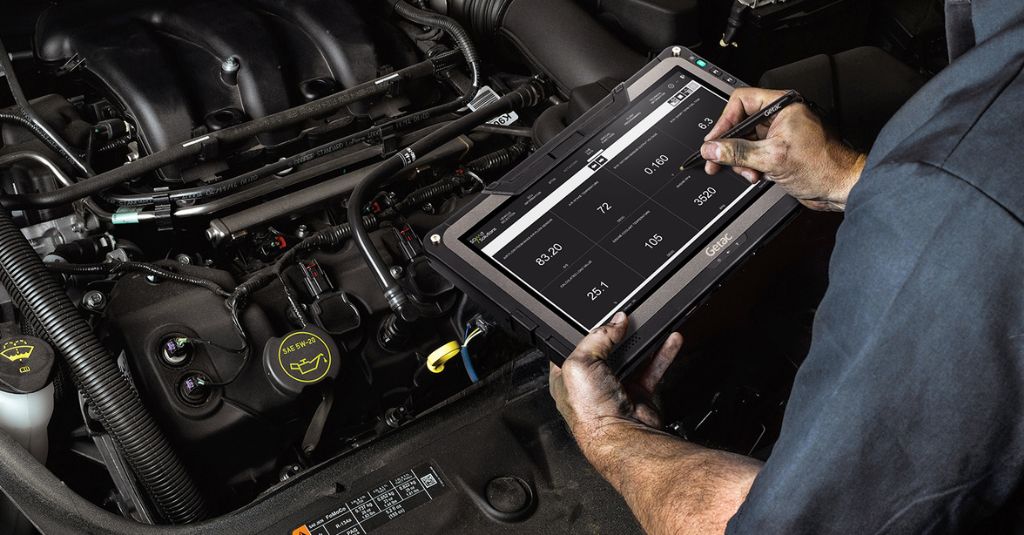As one of the leading rugged computer providers, Getac offers extensive rugged computing product lines and serves a wide range of vertical markets.

Getac Select ®
A combination of rugged computing devices, software, accessories and professional services in a purposeful range of specifically tailored solutions.
Getac Assist
Getac Assist is our fully rugged remote expert solution aimed at assisting field service engineers and technicians with knowledge transfer, remote guidance, inspection, quality control, safety, compliance, and more.
Defence
Mission-critical COTS computing that delivers high powered processing and reliability in operational environments.
Public Safety
Ambulance, Fire & Rescue and Policing applications
Utilities
Smart Meter Reading and Installation, On-site Safety, Utility Asset Management, Workforce Management for Utilities, Mobile GIS, Surveying and Mapping
Transportation & Logistics
Railroad Management, Airport Management, Port Management, Long-haul Delivery Fleet Management, Warehouse Materials Handling
Oil & Gas
Remote Support, Asset Management, Field Data Analysis, Workplace Safety
Industrial Manufacturing
Industrial Programming and Robotic Control, Facility management, Compliance and Inspections, Workforce Management, Inventory and Warehouse Management, Factory Automation and Plant Monitoring, EAM and CMMS Solutions.
Automotive
Optimised Rugged Mobile Solutions to drive a smarter approach throughout the automotive value-chain.
Natural Resources
Mining, Forestry and Construction applications
Android is already a very popular rugged tablet operating system (OS), and its relative share of the market is expected to keep growing. However, when it comes to industry field services, Android has even more potential. This is due to the recent shifts in how field service jobs are done, recent evolution, and diversification in the form factors that offer it.
Any viable rugged field service tablet needs MIL-STD-810H (formerly MIL-STD-810G) and IP65 or higher certification. This assures the device can survive and operate under the stresses it’s likely to encounter in tough environments. It also needs to tolerate drops from 4 feet or higher. If you work in a sector that presents a risk of explosive atmosphere, having intrinsic safety (ANSI/UL certification) features in your device is paramount.
As a corollary, that tablet’s touchscreen may also need to do the following:
In a smaller tablet (7-8”), you may be able to get a full shift from a single battery. But if you’re dealing with a larger device with a larger screen, and more functionality to go with it, dual batteries with hot-swap capability (i.e., battery changeout without interrupting operation) would be ideal. There’s also configurability for onboard asset ID capabilities (via barcode scanner or RFID) to consider if needed.
Most of the general strengths of Android as an operating system relative to Windows can be classified into three areas for field services.
The Android operating system (OS) is easy to learn and easy to use. Many of us already carry around Android devices in our pockets. As a mobile-first operating system, Android is designed for the simple one-touch completion of many tasks. Many digital natives, who are becoming an ever-larger percentage of the field service workforce, are already accustomed to this OS for all-around productivity.
There are thousands of certified enterprise-ready applications for the Android OS. Its open nature enables field service providers to easily develop their own apps. What’s more, much newer peripheral and Internet of Things (IoT) devices are mobile-first and Android-compatible. Together, this enables agile and adaptable field service operations.
The Android operating system and the mobile rugged devices intended to run it are both designed for power efficiency. This makes it easier to extend operation to a full shift, or beyond. As we increasingly depend on our devices for more tasks, there is a much-needed demand for safety, especially in hybrid and remote work scenarios. Android can be a viable option for this requirement.
The last few decades have seen major advancements in worker safety. However, accident rates in field services were a mixed bag in the 2010s.
The effects of the pandemic on field service accident rates are not yet clear. What we do know is that the pandemic has changed how we work. It has accelerated certain trends that were already happening, many of which are bound to have an impact on safety.
Large-scale workforce retirements happened and are still happening. This has led to organizations hiring new workers, though often not enough to keep pace. Such phenomenon gave rise to heightened accident risks where jobs once done by teams or pairs are increasingly being done by individuals.
Numerous studies have indicated that human error, neglect of safety procedures, and inadequate training can be major contributing factors to industrial accidents. Android—thanks to its low power consumption and developer-friendly nature—can be particularly helpful in addressing these problems.
Sensors/detectors and wearables both ranked in the top five based on a survey of technologies used by health and safety professionals. Experts use these devices to monitor workers’ vitals, look for signs of fatigue or inattention, and detect unsafe work practices. Due to its mobile nature, Android can facilitate adoption, while also making available a wide variety of apps to supplement or develop yourself.
Another example of the pandemic's impact on workplaces is the increasing shift to onside learning via video-based training and remote guidance.
Today, remote guidance might involve a senior person at headquarters giving spoken instructions to a junior person in the field. Augmented reality-based guidance is waiting in the wings. Edge computing has enabled real-time in-context instruction and real-time prompts/alerts when something is wrong, or if safety procedures are ignored. With all these battery-intensive capabilities, Android’s power efficiency becomes even more attractive.
The Getac ZX70 has been in the rugged Android market for several years. This 7-inch tablet has the best-in-class battery life and is well-suited to long repetitive tasks. Recently, Getac field service customers have been increasingly asking for something more suited to a diverse workload. Some of these requirements include a larger screen, enhanced remote video conferencing, and improved asset inspection capabilities.
Enter the ZX10, a fully rugged and highly capable device built to handle a growing and evolving body of field service duties. The device sports a spacious 10-inch sunlight-readable touchscreen with a stylus, a best-in-class front/back camera combo, a slim but versatile profile, and a full-shift battery life that can go well into overtime via hot-swapping. With its advanced video communication, information capture, and remote guidance capabilities, the ZX10 is the fully-rugged Android tablet for your workday.
Getac also offers optional enterprise-grade administration enhancements via OEMConfig and deployXpress for its Android devices.

As one of the leading rugged computer providers, Getac offers extensive rugged computing product lines and serves a wide range of vertical markets.



